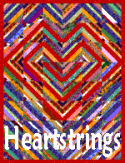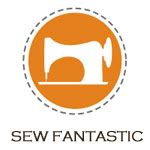 Art, when spelled with a capital A, means it's an valued and important art, not just any old art. And so therefore, this Quilt Show--Art with a capital Q--is important exhibit regarding quilts. This exhibit was meant for more than quilters and is not your usual quilt show. This quilt show, held in Friesland Museum in the northern part of the Netherlands is being held from November 16, 2008 to March 29, 2009. The exhibition is based on the collection of the Fries (pronounced Freece) Museum, supplemented by loans. Ted's quilt was one of them. More on that later.. They not only wanted to shed light on the history of quilting in the Netherlands, but how contemporary quilters are pushing the boundries of quilting.
Art, when spelled with a capital A, means it's an valued and important art, not just any old art. And so therefore, this Quilt Show--Art with a capital Q--is important exhibit regarding quilts. This exhibit was meant for more than quilters and is not your usual quilt show. This quilt show, held in Friesland Museum in the northern part of the Netherlands is being held from November 16, 2008 to March 29, 2009. The exhibition is based on the collection of the Fries (pronounced Freece) Museum, supplemented by loans. Ted's quilt was one of them. More on that later.. They not only wanted to shed light on the history of quilting in the Netherlands, but how contemporary quilters are pushing the boundries of quilting.There were 10 rooms, starting with the Treasure Chamber which kind of gave a representation of the different types of quilts (this is where Ted's quilt was displayed on a square frame that slowly rotated--pretty cool, but not great for photo taking!). There were 6 different themes of the exhibition: history--beginning with the oldest of the quilt forms--quilted skirts; techniques--from the basic triangles to applique; materials-the oldest were made from silk; form--it can go beyond the traditional rectangle found in bed quilts; applications--from a traditional bed blanket, to teacups to clothing or pieces of art; emotions--crafted with care and attention for children, those that were sick (such as the AIDS quilt) or in need.
This was a most unusual quilt show and for those looking for a traditional quilt show might be disappointed. But I found it very unusual and totally fascinating with a variety of quilted objects and many styles of quilting. Kaffe Fassett's works were also included in that he designs his own colorful fabrics and uses them to create traditional quilts based on the inspirations of historical quilts.
Something else we saw was a notebook filled with scraps of cloth that had been preserved by the family since 1830. And we think we have original ideas! :)  Patchwork can easily be traced in Holland to the eighteenth century but normally did not have batting. Half square triangles were a common patch shape used.
Patchwork can easily be traced in Holland to the eighteenth century but normally did not have batting. Half square triangles were a common patch shape used. 
 Patchwork can easily be traced in Holland to the eighteenth century but normally did not have batting. Half square triangles were a common patch shape used.
Patchwork can easily be traced in Holland to the eighteenth century but normally did not have batting. Half square triangles were a common patch shape used. 
One part of the exhibit that I loved was the one part in the "Emotions" room. There was a nice display of American traditional 30's style quilts. They represented a period in time during and immediately following WWII. Canadian and North American quilts came to Friesland as part of relief cargoes. There was a book in the bookshop about the story of that period in time when Americans made quilts to send over to the Dutch (similar to how we sent quilts to help the Hurricane victims). I bought the book and am anxious to read it. It gave me some goose bumps to realize how much they must have been treasured. And should encourage ALL of us to continue to send quilts to those in need.
They represented a period in time during and immediately following WWII. Canadian and North American quilts came to Friesland as part of relief cargoes. There was a book in the bookshop about the story of that period in time when Americans made quilts to send over to the Dutch (similar to how we sent quilts to help the Hurricane victims). I bought the book and am anxious to read it. It gave me some goose bumps to realize how much they must have been treasured. And should encourage ALL of us to continue to send quilts to those in need.
 They represented a period in time during and immediately following WWII. Canadian and North American quilts came to Friesland as part of relief cargoes. There was a book in the bookshop about the story of that period in time when Americans made quilts to send over to the Dutch (similar to how we sent quilts to help the Hurricane victims). I bought the book and am anxious to read it. It gave me some goose bumps to realize how much they must have been treasured. And should encourage ALL of us to continue to send quilts to those in need.
They represented a period in time during and immediately following WWII. Canadian and North American quilts came to Friesland as part of relief cargoes. There was a book in the bookshop about the story of that period in time when Americans made quilts to send over to the Dutch (similar to how we sent quilts to help the Hurricane victims). I bought the book and am anxious to read it. It gave me some goose bumps to realize how much they must have been treasured. And should encourage ALL of us to continue to send quilts to those in need. I enjoyed the show, and didn't mind the long drive to Friesland. To some of the Dutch--it's extremely far away, but 1 1/2 hours isn't that long of a drive when you are enjoying the scenery of the farms with their pastures separated by small canals instead of fences, seeing the occasional windmills.
There was a great book on the history of Dutch quilts, but it's only in Dutch right now. There is a website on how you can get on a list of wanting one in English and when they hit 500, they'll consider doing it. Here's where you can check it out.








































No comments:
Post a Comment